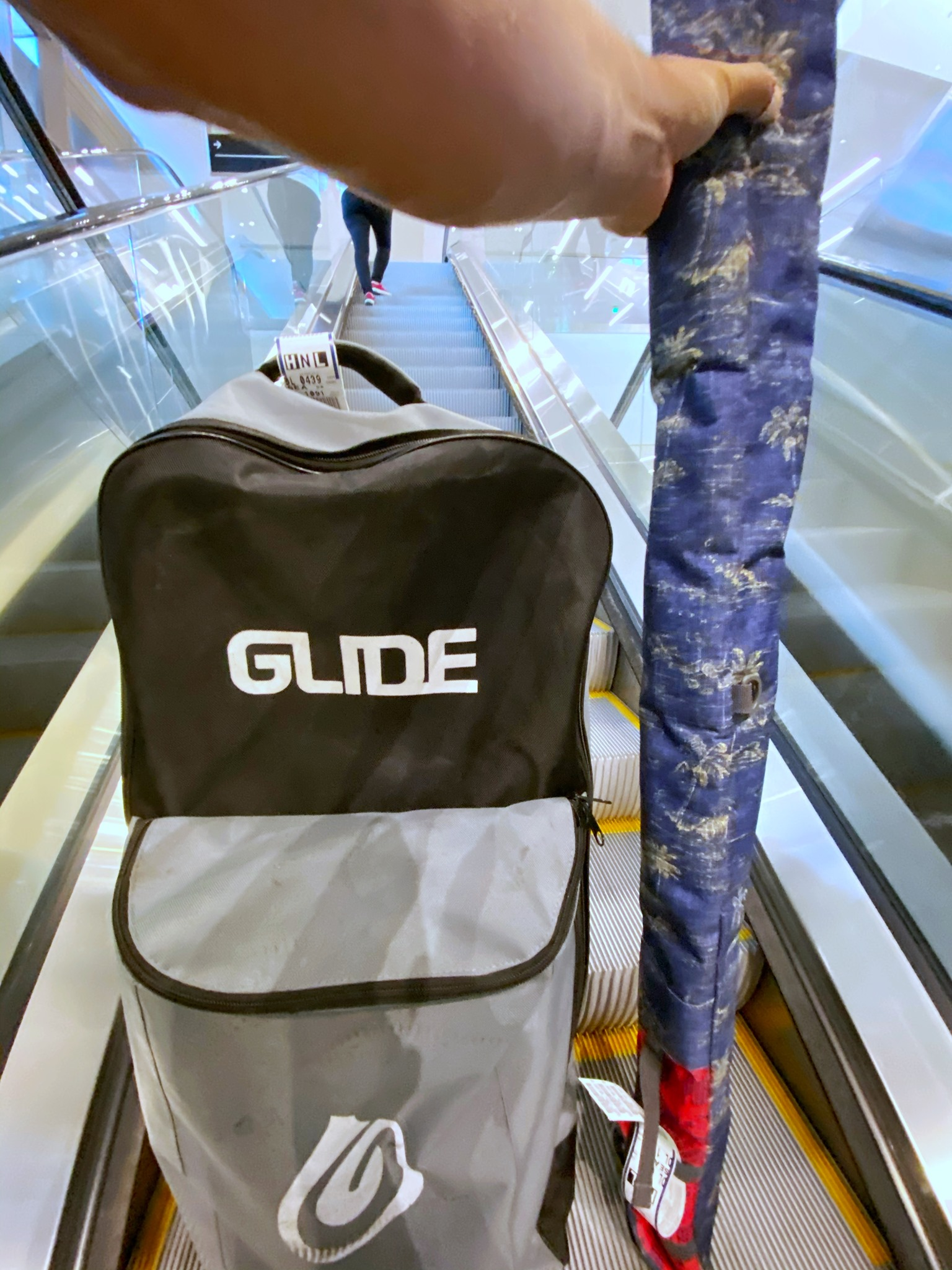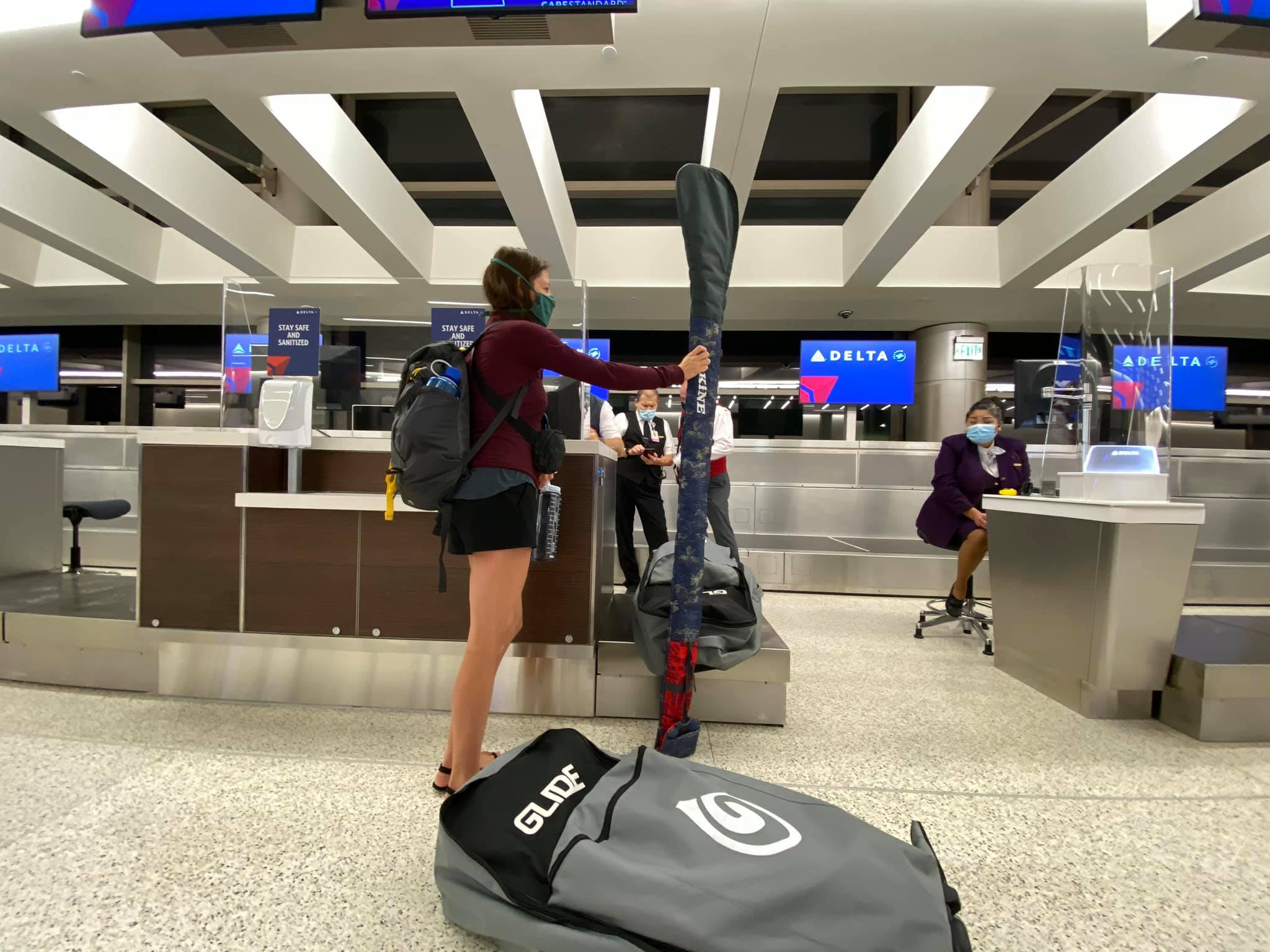
Can You Fly with an Inflatable Paddle Board? Yes — Here's How.
Wondering if you can fly with an inflatable paddle board? The answer is yes. With smart packing and the right board, your SUP can travel anywhere — from local lakes to international coastlines. Here’s how.
One of the biggest perks of owning an inflatable paddle board is how easy it is to travel with. Unlike hard boards, which require roof racks and oversized shipping, inflatables pack neatly into a backpack that can be checked on most airlines. This guide explains everything you need to know about flying with an inflatable SUP — from packing tips to airline rules — so you can bring your board wherever adventure takes you.
Table of contents
One of the biggest advantages of an inflatable paddle board is that it’s travel-ready. Unlike hard boards that require roof racks, oversized freight, or complicated logistics, inflatable SUPs roll up, pack light, and can go almost anywhere. Whether you’re heading to a mountain lake, a tropical coastline, or halfway across the world, the answer is simple: yes, you can fly with an inflatable paddle board.
Here’s exactly how to travel smart with your inflatable SUP — and why Glide boards are perfect for the journey.

Why Inflatable SUPs Are Ideal for Air Travel
Inflatable paddle boards are designed with convenience in mind. When deflated and rolled, most pack neatly into a backpack that weighs under 40 pounds, even with all the accessories included. That means they fall within most airlines’ standard checked baggage policies.
Glide boards, in particular, are constructed with AeroMatrix™ woven drop-stitch technology and Thermo-Fuse™ triple-layer rails. This combination not only makes them rigid on the water but also durable enough to handle the scuffs, bumps, and drops that come with air travel.
What makes inflatable SUPs travel-friendly:
-
✅ Fit within standard checked luggage dimensions
-
✅ Weigh less than 50 lbs fully packed
-
✅ Require no roof racks, trailers, or special freight shipping
-
✅ Easy to carry through airports, taxis, or trains
-
✅ Durable enough to survive rough baggage handling
With the right inflatable SUP, flying is as simple as rolling, packing, and checking in.
Airline Rules: What You Need to Know
Every airline has its own baggage policies, but most treat inflatable paddle boards as standard checked luggage. Here are the key factors to keep in mind:
Weight Limits
Most airlines cap standard checked bags at 50 lbs (23 kg). Glide boards with all included accessories typically weigh around 23–25 lbs for the board and 35–40 lbs total with pump, paddle, leash, and fins. That keeps you safely under the limit.
Dimensions
The Glide inflatable SUP backpack is designed to fit within standard airline luggage requirements. At roughly the size of a large suitcase, it’s rarely flagged as oversized.
Batteries and Pumps
-
Electric Pumps: If you’re traveling with Glide’s rechargeable electric pump, airlines typically require you to remove the battery and carry it on. The pump itself can be checked with your board.
-
Manual Pumps: Safe to check every time.
Fins and Accessories
Detach your fins, wrap them in soft clothing, and pack them carefully. Some paddlers prefer to carry fins in hand luggage to avoid damage, but either option works if they’re protected.
💡 Pro Tip: Check your airline’s sports equipment policy before flying. Some airlines even classify SUPs under “surf equipment” and may waive oversize fees if you meet weight requirements.

Packing Tips for Your Inflatable Paddle Board
Packing your board properly helps protect your investment and ensures smoother travels.
-
Rinse and Dry First – Saltwater or lake debris can lead to mildew during long trips. Always pack your board dry.
-
Roll Tightly from Nose to Tail – This removes excess air and makes the board more compact.
-
Use the Glide Backpack – Purpose-built with padding and compartments for paddle, leash, and pump.
-
Protect Fins and Pump – Wrap them in clothing or towels for extra cushioning.
-
Compression Straps – If traveling internationally, tighten straps inside the backpack so gear doesn’t shift.
-
Distribute Weight – Place heavier items (pump, fins) closer to your back for easier carrying through airports.
Think of your board bag as both luggage and protective case — organized packing means less stress when you arrive.
International Travel: SUP Tips Abroad
Flying internationally with your inflatable SUP opens up incredible paddling opportunities — but also requires a little extra planning.
-
Customs and Duties: Some countries may ask about sports equipment on arrival. Carry a copy of your order confirmation or receipt to prove it’s personal gear.
-
Adapters and Voltage: If you’re using an electric pump, bring the correct plug adapter and check voltage compatibility (many countries use 220V vs. 110V in the U.S.).
-
Travel Insurance: Look for policies that cover sporting equipment. This ensures your board is protected if luggage is delayed or damaged.
-
Local Rules: Not every country allows SUPs everywhere. Research local waterways, check permits if required, and learn about safety regulations.
-
Transport Abroad: Once you land, your backpack SUP is easier to fit into taxis, buses, or trains than a hard board would ever be.
With the right prep, you’ll be ready to paddle in new waters without a hitch.

Glide Boards Are Built for Adventure
Unlike many brands that design inflatables as budget alternatives, Glide builds boards with performance and travel in mind.
-
Military-grade materials withstand rough handling.
-
Compact and lightweight builds stay under airline limits.
-
Travel-friendly add-ons include:
-
The AirThrone kayak seat (standard with Elite boards)
-
A kayak paddle blade that converts your SUP paddle
-
A rechargeable electric pump with removable battery
-
Glide boards aren’t just easy to fly with — they’re designed to help you paddle farther, explore more, and adapt your adventure anywhere in the world.
Final Thoughts: Can You Fly with An Inflatable Paddle Board
Flying with your inflatable paddle board truly expands your horizons. Instead of being limited to local lakes or renting boards abroad, you can bring your own gear and paddle anywhere: alpine lakes, tropical lagoons, winding rivers, or hidden coastal coves.
The convenience is unbeatable:
-
No roof racks.
-
No expensive freight shipping.
-
No stress about finding rentals when you land.
With the right inflatable board, your SUP becomes as portable as a suitcase. Just roll, pack, check it in, and start your adventure the moment you arrive.
So, can you fly with an inflatable paddle board? Absolutely. And with a Glide board, you’ll know it’s built tough enough to handle the trip — and smooth enough to make every paddle unforgettable.
Ready to Travel Light and Paddle Anywhere?
FAQs
Can you take an inflatable paddle board on a plane?
Yes. Most inflatables pack into a backpack-style bag that fits within airline checked baggage limits.
Does it count as regular luggage or oversized?
Usually regular checked luggage, as long as it stays under the airline’s weight and size limits. Always confirm with your airline.
How much does it cost to fly with a paddle board?
Most airlines charge their standard checked baggage fee ($30–$60 in the U.S.). Oversized or overweight bags may cost more.
Do I need to deflate my SUP completely for flights?
Yes. Always deflate and roll your board tightly into its travel bag. Never attempt to fly with an inflated board.
Can I carry the pump and paddle on the plane?
Paddles and pumps usually go in checked baggage. Three-piece paddles fit inside most SUP backpacks.
What’s the risk of flying with an inflatable SUP?
Minimal if packed well, but protect sharp fins and bring patch kits just in case.
Are there boards designed specifically for travel?
Yes. Lightweight inflatables under 25 lbs with compact bags are easiest to fly with. Glide’s Retro and Lotus models are great travel options.





